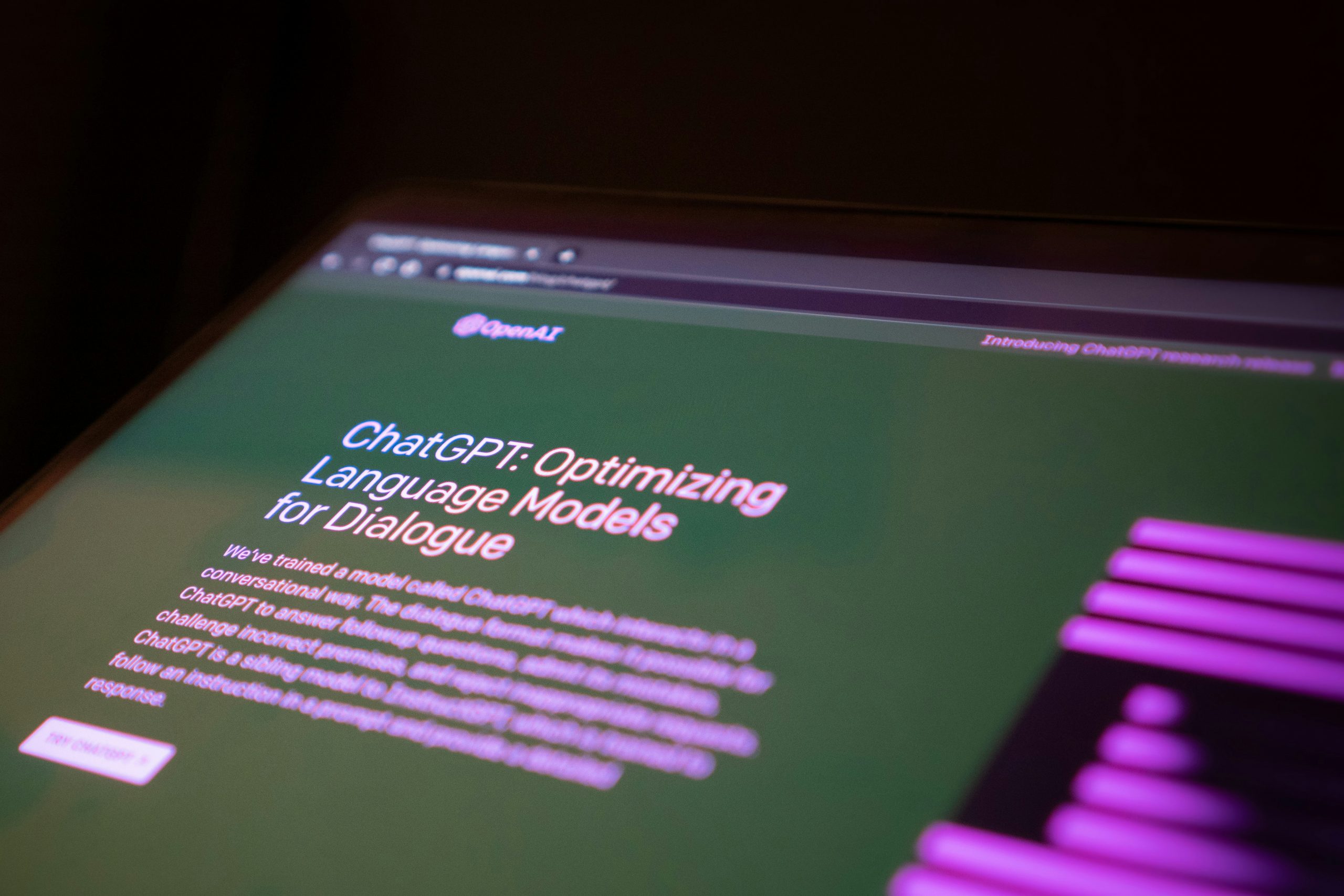When you hear of “AI text generators,” most likely the first thing that comes into your mind is ChatGPT. That much is to be expected as that is what made the technology well known to the public. Its 2019 release sparked widespread interest and discussions across various industries due to its impressive language generation capabilities and the ethical considerations surrounding its use in that ChatGPT is unable to generate potential harmful material such as malware codes.
While it boomed in recent years, the truth is that AI text generators have been around for several decades and ChatGPT isn’t the only one. Their roots date back to the early development of natural language processing (NLP) and machine learning (ML). And since their inception, they have evolved and captivated industries with their ability to efficiently churn out relevant written content.
However, as with any technological advancement, reception has been mixed. Safe to say that AI text generators can be categorized as both a popular and notorious tool surrounded by simultaneous fascination and caution. Enthusiasts advocate for personal and workplace integration due to its efficiency and innovative potential, while skeptics raise concerns about potential biases, ethical implications, and the need for careful monitoring.
Our goal with this guide is to ignite curiosity and alleviate any reservations surrounding AI text generators by providing you with information to help you better understand what they are, how they work, how they can be applied or used, what benefits they bring, and some other FAQs about the tool. Our commitment stems from the belief that a transparent and thorough comprehension of unfamiliar technologies leads to effective utilization and widespread acceptance. So by demystifying intricacies through knowledge, we encourage a more informed and open-minded approach to their integration.
What are AI Text Generators?
AI text generators have emerged as cutting-edge tools that reshape the way we approach written content. At their core, they are sophisticated applications of artificial intelligence algorithms designed to produce human-like text. They achieve this by leveraging intricate language models trained on vast datasets, enabling them to understand and mimic the nuances of human language.
As exemplified by models like OpenAI’s GPT series, they are a manifestation of the advancements in NLP, which is also why they are sometimes referred to as natural language processing generators. What this basically means is that, unlike traditional rule-based systems, they do not rely on predefined grammatical rules. Instead, they learn from extensive datasets and undergo training to comprehend the structure, context, and patterns of written language. The result is a tool capable of generating coherent and contextually relevant text across a wide range of topics and styles.
In essence, AI text generators represent a fusion of linguistics and machine learning, empowering users to effortlessly create written content without the need for extensive manual input. Their existence marks a milestone in the convergence of technology and language, opening doors to new possibilities in content creation and communication.
How do AI Text Generators Work?
As previously mentioned, these AI text generators operate through sophisticated algorithms based on NLP and ML. Now, some may get this right off the bat, but for those who aren’t as well-versed in AI and also for those who want to learn more, we will delve into the intricate workings of these generators and demystify their process, which will be broken down into 4 steps.
1. Data Collection and Training
AI text generators embark on their journey by immersing themselves in vast amounts of textual data – a diverse compilation of articles, books, and websites. This data serves as the foundation for the AI model to learn the intricacies of language patterns, grammar rules, and semantic meanings. They are then trained through supervised or unsupervised learning methods, where the model refines its ability to predict the next word in a sequence based on contextual information from preceding words. The training process involves meticulous adjustments to the model’s parameters to minimize errors and enhancing its predictive capabilities.
2. Fine-Tuning for Precision
Following initial data collection and training, the AI model undergoes fine-tuning to optimize its performance for specific tasks or domains. This involves exposing the model to additional data or fine-tuning parameters to refine its abilities. The goal is to enhance the precision of generated text so it aligns seamlessly with the intended context or purpose.

3. Generating Coherent Text
When prompted with a starting phrase or topic, the AI text generator utilizes its acquired knowledge to predict and generate coherent text. This process involves leveraging techniques such as recurrent neural networks (RNNs), transformers, and attention mechanisms. These technologies enable the generator to produce text that mirrors human writing style and context, which makes it a versatile and powerful tool for various applications.
4. Refinement and User Feedback
The journey doesn’t end with the generation process. AI text generators continuously refine their output through feedback mechanisms. Users play a crucial role in this iterative process, providing feedback that helps the model improve over time. Developers contribute to this evolution by periodically updating the model with new training data and techniques, ensuring ongoing enhancements in accuracy and performance.
In essence, AI text generators represent a harmonious blend of linguistic understanding and machine learning prowess. As they evolve, the synergy between human creativity and artificial intelligence leads to a future where we can keep pushing the limits of creative expression, opening up new possibilities in how we communicate through writing.
10 Applications of AI Text Generators
It’s no exaggeration to say that these machine learning text generators are useful and powerful tools, and that is evident through their versatile applications across various industries. Don’t believe it? Here are some of best examples:
1. Content Creation
AI text generators are adept at producing high-quality written content in the forms of blog posts, articles, and marketing copy, making them valuable time- and energy-saving tools for content creators, marketers, and bloggers.

2. Social Media Management
Social media marketers use them to craft engaging and appropriate social media posts as they can suggest creative captions, generate tweets, and create content that aligns with a brand’s voice, all of which helps in maintaining a consistent online presence.
3. Copywriting and Advertising
These tools assist in copywriting and advertising by generating compelling ad copies, slogans, and product descriptions, thereby contributing to the development of persuasive and attention-grabbing content for promotional purposes.
4. Email Drafting
Professionals can streamline email communication by using AI text generators to draft clear and coherent messages. These tools can suggest language, improve tone, and enhance the overall quality of written communication.
5. Creative Writing Support
Authors and creative writers can use AI text generators as sources of inspiration as they can provide prompts, suggest plot ideas, or even assist in developing characters, sparking creativity in the writing process.
6. Code Generation
AI text generators can assist programmers by generating code snippets based on natural language prompts, streamlining the coding process and helping developers in tasks like prototyping or exploring solutions.
7. Language Translation
They also play a role in language translation as they can handle a variety of languages, essentially contributing to making the process more efficient and aiding global communication.
8. Educational Content Creation
Teachers and educators can utilize these tools to create educational materials, lesson plans, and instructional content, which eases the development of engaging and informative learning resources.
9. Chatbots and Customer Support
They also power chatbots and virtual assistants, enhancing customer support services, and provide quick and accurate responses, improving user experience and efficiency in resolving queries.
10. Legal and Business Writing
Professionals in the legal and business domains can use them for drafting contracts, reports, and other documentation to ensure accuracy and consistency in written materials.
As AI text generators continue to advance, their applications are likely to expand further, offering innovative solutions in various fields and reshaping the landscape of written communication.
5 Benefits of Using AI Text Generators
AI writing tools stand at the forefront of technological innovation, offering a myriad of advantages for individuals and organizations alike, such as:
1. Heightened Efficiency and Speed
AI writers excel in swiftly generating text on a large scale, proving invaluable for diverse tasks such as crafting website content, scripting podcasts, or generating news articles. This proficiency translates into substantial time and resource savings, especially for those with extensive written content requirements.
2. Elevated Accuracy and Consistency
AI writers contribute to the production of high-quality content by eliminating spelling and grammar errors. This not only enhances the overall quality and clarity of the text but also ensures adherence to specific style guides or tones. The result is a corpus of content that maintains uniformity and precision.
3. Enhanced Flexibility and Customization
These tools showcase remarkable versatility – as shown in the previous section about their application – capable of being trained to produce text in diverse styles and formats. Whether it’s crafting emails, social media posts, or delving into creative realms like fiction or poetry, AI writers can be easily tailored to meet the unique requirements of individuals or organizations.

4. Cost-Efficiency
Integrating AI writers into workflows often leads to significant cost savings. The reduced reliance on human writers or editors proves advantageous for businesses or organizations with consistent high-volume content demands, offering an efficient and economical alternative.
5. Boosted Creativity
Beyond routine tasks, AI writers demonstrate a surprising capability to generate creative content, including poetry and fiction. This opens doors for individuals and organizations to broaden their creative horizons, exploring new concepts and expanding the possibilities in creative content creation.
Five FAQs about AI Text Generators
We’ve covered just about everything we can about AI text generators, including their intricate systems, various uses, and added benefits. Here are some other FAQs that should help expand your knowledge and dispel doubts.
1. Can AI text generators replace human writers?
While AI text generators offer efficiency and productivity, they can’t replace the nuanced creativity, emotion, and context comprehension of human writers. At best, they shall only be regarded as valuable tools for augmentation and support.
2. Are there ethical considerations when using AI text generators?
Yes, there are. Users must be mindful of potential biases in training data, avoid generating misleading content, and ensure transparency. Responsible use and monitoring are essential to mitigate ethical concerns.

3. How secure is the data used to train AI text generators?
Data security is a paramount to the success and reliability of AI. Reputable providers should prioritize data privacy and employ measures to anonymize and protect training data, while users should choose trustworthy platforms and understand data handling practices.
4. What precautions should be taken to avoid biased content generation?
To mitigate biases, it’s important to use diverse and representative training data, regularly audit and monitor generated content for potential biases, and implement fairness-aware training techniques.
5. Are there differences between various AI text generator models, and how do I choose the right one for my needs?
Yes, different models exhibit variations in capabilities and performance. Choosing the right one depends on factors like the specific task, dataset requirements, and desired output quality. Comparing models and consulting with AI experts can guide the selection process.
Navigating the Future with AI Text Generators
As we delved into the core mechanics of AI text generators, their capabilities and possible limitations, and their positive impact both in personal and professional work, we hope that this has removed and replaced any and all doubts into genuine interest and acceptance. Once you’ve had full comprehension of this state-of-the-art technology, you can achieve optimal utilization and integration.
The journey doesn’t end here, however. It is imperative to recognize that the landscape of AI is ever evolving, and it will continue to propel us to a future where advancements in AI are inevitable. Navigating this future necessitates a commitment to continuous learning and adaptation. Staying informed and embracing the changing dynamics of AI ensures that you not only keep pace with innovation but also lead the way in leveraging these tools for enhanced productivity and creative expression.
Still curious about AI Text Generators? Be able to try out what you’ve learned in the article or explore the app yourself today!





